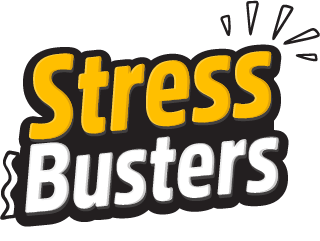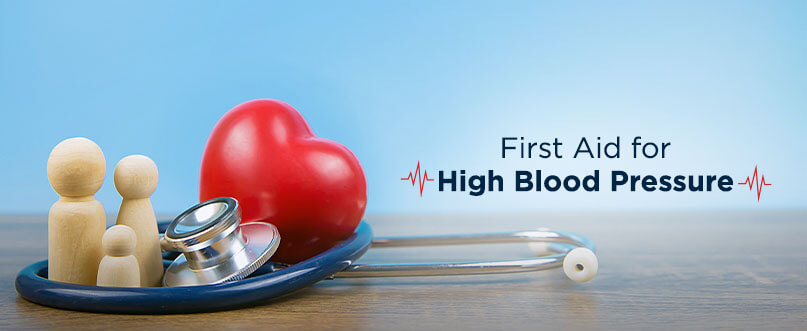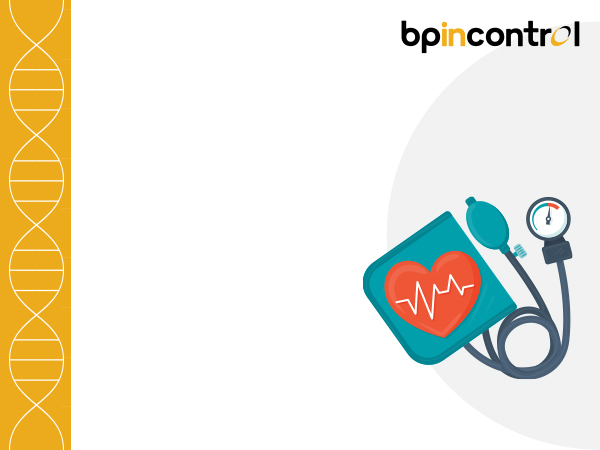
First Aid for High Blood Pressure

Table of Contents
Optimum blood pressure levels keep your heart and the cardiovascular system healthy. While some situations like stress, illness, or medications can increase blood pressure levels, chronically elevated levels can be hazardous. Blood pressure is the force of blood on our arterial walls. Having blood pressure above the regular 120/80 mm Hg is hypertension.
Unchecked or untreated elevated blood pressure levels can be catastrophic and result in stroke and heart attack. Routine blood pressure monitoring at home and visiting your doctor are essential to prevent and better manage high blood pressure levels. However, specific first aid measures can help you manage this precarious situation better.
High Blood Pressure Signs and Symptoms to Watch Out For
Hypertension, often referred to as the ‘silent killer’, rarely gives indications of its onset. Here are some signs and symptoms to watch out for:
- Frequent headache
- Excessive sweating
- Dizziness
- Facial flushing
- Nausea and vomiting
- Shortness of breath
- Pain in the chest, arms, back, and shoulders
Failing to monitor hypertension can lead to severe consequences. Signs of severely elevated blood pressure levels include:
- Fatigue
- Nosebleed
- Irregular heartbeat
- Severe headaches
- Vision trouble
First Aid for High Blood Pressure
When we speak of first aid, it is the first or primary treatment given for an emergency condition, which also applies to elevated blood pressure. High BP first aid emphasises seeking medical conditions when required. To know ‘when’ to seek high bp first aid, you must regularly monitor your blood pressure levels. Here are some ways to lower your blood pressure levels in case of an emergency:
-
Take your prescribed antihypertensive medications:
It is the most commonly used method to reduce blood pressure. However, it may take some time for your blood pressure to return to normal after taking the medication. Taking medicines prescribed by your doctor can avoid any cardiovascular emergency like heart attacks or stroke.
-
Eat some dark chocolate:
If you are a chocolate lover, this may surprise you: Eating dark chocolate can lower blood pressure. Dark chocolate contains flavonoids, which are chemicals that dilate blood vessels, subsequently lowering blood pressure.
-
Drink hibiscus or chamomile tea:
Hibiscus and chamomile teas are very popular among the health-conscious. Antioxidants in these teas provide many health benefits, including reducing blood pressure levels.
Effective Ways to Control High Blood Pressure
While is it essential to know high blood pressure emergency first aid options mentioned above, you can lower your blood pressure levels by following a healthy lifestyle that comprises of:
-
Regular Exercise
Regular exercise is essential to stay healthy and live disease-free. Following a regular workout routine can help keep your blood pressure levels down. According to the American Heart Association (AHA), exercising for a minimum of 30 minutes a day or 150 minutes a week can help improve your strength, burn calories and keep your blood pressure and blood sugar levels within normal limits. It also helps reduce the risk of heart and cardiovascular diseases.
-
Beat the Stress
Acute stress that we experience from time to time in our lives is healthy. However, chronic stress is harmful and raises your blood pressure for a long time. When we are stressed, our body releases a hormone called cortisol that increases blood pressure. So, when we are chronically stressed, our body consistently produces high amounts of cortisol, resulting in chronically high blood pressure levels. Therefore, effective stress management is vital to keep your blood pressure levels within the normal range.
-
Adopt a DASH Diet
The American Heart Association recommends hypertensive people follow the DASH or Dietary Approaches to Stop Hypertension diet. In fact, following the DASH diet regularly can help bring down your blood pressure levels by as much as 11 mm Hg.
A typical DASH diet requires you to consume the following foods:
- Whole grains
- Fresh fruits and vegetables
- Low-fat dairy alternatives
- Nuts and seeds
- Fatty fish
- Lean meats
Avoiding foods rich in saturated fats, for example, processed and fried foods, sugary foods, etc., can help lower your blood pressure levels.
-
Low Sodium Intake
If you are ever in doubt about “How to mitigate high blood pressure?” Bid goodbye to table salt. Increased sodium consumption (in salt) stimulates the body to reabsorb water from the kidneys. It further increases the volume of blood and, subsequently, blood pressure. So, the best way to keep your blood pressure in check is to reduce your sodium intake.
Conclusion
While the various first aid measures mentioned above help control your high blood pressure levels, you must always consult your physician to understand the exact blood pressure problems and implement effective solutions. Having hypertension is not the end of the world. Following a nutritious DASH diet, regular workouts, and leading a healthy lifestyle can help keep your blood pressure within normal limits.
Find more information about hypertension and how to manage it on BPinControl effectively.
Note of caution: This article is for information purposes only. Always consult your doctor before altering any diet plans, medications or in case of any other blood pressure-related troubles.
Disclaimer
The information contained in this article is to educate, spread awareness in relation to hypertension and other diseases to the public at large. The contents of this article are created and developed by BPinControl.in through its authors, which has necessary, authorisations, license, approvals, permits etc to allow usage of this articles on The Website. The views and opinions expressed in this article are views, opinions of the respective authors and are independently endorsed by doctors. Although great care has been taken in compiling and checking the information in this article, The Website shall not be responsible, or in any way liable for any errors, omissions or inaccuracies in this article whether arising from negligence or otherwise, or for any consequences arising therefrom. The content of this article is not a substitute for any medical advice. The Website shall not be held responsible or liable for any consequence arising out of reliance on the information provided in the article.


Comments (0)
No comments found.Add your comment